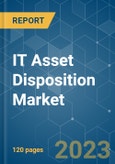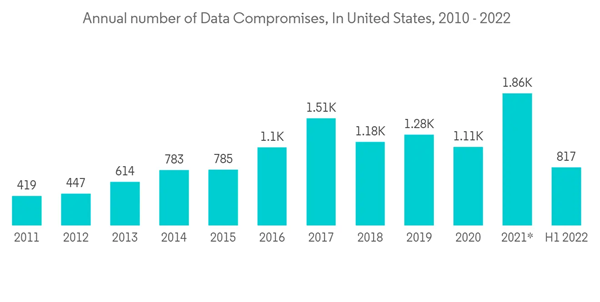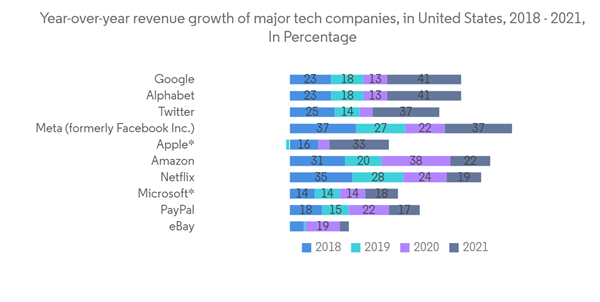Key Highlights
- ITAD recycles, repurposes, and fixes old IT equipment to reduce its impact on the environment. The interior parts of IT equipment can be reused to reduce electronic waste. At the same time, heavy metals and plastics are kept out of the environment and can be used for recycling.
- The decision of whether to repair, resell, recycle, or dispose of outmoded equipment must be made by some businesses, while others have a systematic cycle for replacing electronic gadgets. Internally, the disposition of IT assets is handled in part by asset management, accession, and risk management. A business may collaborate with outside ITAD businesses.
- These businesses often provide secure data destruction and electronic waste recycling. Suppliers of ITAD assist clients in getting rid of IT assets while saving money and recouping the value of the equipment. Its expansion is driven by clients' increasing awareness of the importance of efficient IT asset disposal. Companies highlight the advantages of cloud computing. As a result, the move to the cloud from on-premise IT is a market driver.
- The past few years have seen a notable increase in the demand for IT asset disposition, primarily as a result of growing worries about environmental protection, data security, and regulatory compliance. The need for good e-waste disposal techniques, environmental rules that enterprises must follow, and the enormous amount of e-waste generated all contribute to the sales. In addition, it is projected that the BYOD trend, which is becoming increasingly popular and is supported by cutting-edge technology, will greatly increase demand for IT asset disposition shortly.
- However, low awareness, high service costs, and a lack of comprehensive IT asset disposition policies are the major challenges for the market. Additionally, the economy related to recycling and the output value of the recycled material also acts as a major challenge for the IT Asset Disposition business.
- The COVID-19 pandemic has afflicted most nations on earth. The development velocity was the main worry for IT organizations, making efficient management of surplus equipment necessary. Businesses had to buy new IT equipment because of the shift to remote work during the pandemic. There have been questions regarding how companies will manage the increases in electronic or IT asset waste that would emerge from the expansion of remote working-related IT asset purchases. The pandemic dramatically boosted the need for IT asset disposition services.
IT Asset Disposition Market Trends
Regulatory Policies for Data Security and Environmental Safety to Drive the Market
- Companies are required to regularly review their practices for managing outdated IT equipment due to different regulatory compliances, including HIPAA/HITECH and NIST. The majority of potential participants need more solid positions to abide by the application of these regulations. The lack of a safe and orderly process for removing outdated IT equipment can also lead to difficulty in detecting fraud and theft. Therefore, the proper disposal of computers and electronics is governed by several state and federal environmental and privacy standards, and failing to do so may result in significant fines, penalties, and audits.
- Due to the growing risk of data breaches, the Securities and Exchange Commission (SEC) of the United States has increased its focus on the cybersecurity measures that regulated firms are implementing. In fact, as part of its Cybersecurity Initiative, the SEC developed a seven-page sample document request that includes 28 thorough questions for financial institutions and is intended to help businesses assess their level of cybersecurity preparedness. This indicates that the SEC has warned financial service providers to take action to evaluate and improve their organization's data security. The physical protection of IT assets is one area on which the SEC is concentrating. This covers the disposal of information technology assets and information technology asset management.
- The 'Examining the Cost of a Data Breach' data breach calculator from IBM Security estimates that financial institutions in the US will have to shell out an average of USD 11 million for each instance of a data breach. Beyond the monetary impact, data breaches may harm a financial services company's brand and cause clients to lose faith in it. Therefore, it is crucial to address one of the most frequent causes of data breaches, the incorrect disposal of IT assets nearing the end of their lives, and ensure that the necessary security technologies and procedures are in place.
- Companies worldwide are expected to have procedures to guarantee the protection of personally identifiable information (PII). Many nations have put in place legislation to ensure businesses have clear procedures to guarantee personal data protection within their corporation.
- A normal laptop can have parts made of mercury, lead, chromium, and other heavy metals that produce electricity and maintain performance. These chemicals could contaminate groundwater, surface water, or the soil nearby if they end up in a landfill as opposed to a recycling facility. These potentially negative effects highlight how crucial it is to dispose of IT assets properly to prevent inadvertent environmental harm.
- Further, to make a laptop, costly materials such as engineered plastics, steel, copper, aluminum, and precious metals like gold, platinum, and palladium are needed. When laptops reach 'end of life' status, recycling programs attempt to recover these materials for reuse, but occasionally even just obtaining numerous errors like the unity player dll not found, were gathered for recycling. The remainder ends up in landfills, which can no longer be used to create new items since they are no longer reclaimable. These materials can be retrieved with the aid of ITAD, and working assets can be cleaned up together with their data and sold once more. This not only allows businesses to save on their assets but also saves adequate energy during the manufacturing process.
- The overall number of data compromises in the United States during the first half of the current year was 817. Meanwhile, approximately 53 million people were impacted by data intrusions during the same period, including data breaches, data leaking, and data exposure. Even though they are three distinct occurrences, they all have similar traits. An unauthorized threat actor accesses the sensitive data as a result of all three instances.
North America to Lead the Market
- Countries like the United States and Canada consist of leading and established IT and Technology industries. The United States is home to the big five IT and Technology companies like Alphabet(Google), Amazon, Apple, Meta, and Microsoft. According to the Bureau of Labor Statistics, the United States tech industry contributed over USD 1.8 trillion to the nation's overall gross domestic product (GDP) last year, accounting for about 9.3% of the total GDP. However, according to Earth web, the country had at least 585,000 technology companies by the end of the current year.
- According to estimates, the sale of US IT assets will increase rapidly due to the introduction of new technology and digitalization, which will cause obsolete equipment to be replaced. Additionally, during the past few years, demand for ITAD has surged in the US to manage and guarantee the safe disposal of the created e-waste.
- During the anticipated period, the US will use ITAD the most frequently. The US IT asset disposition market is expanding due to adopting new technology, product innovation, strict regulations, and environmental consciousness.
- A multi-stakeholder volunteer group in the US developed the R2 Standard, a periodically revised and updated rule to promote best practices in the electronics recycling sector. Businesses that dispose of electrical and electronic waste in the US are required by the R2 Standard to complete material tracking, conduct background checks on all downstream vendors, fully adhere to legal requirements for operating waste facilities, certify themselves with an appropriate environmental safety management system, and have an adequate pollution insurance policy and financial closure plan in place for business continuity and emergencies. Such policies will drive the ITAD market in the United States.
- Although no federal legislation in Canada specifically addresses e-waste management, the federal government indirectly influences the regulation of e-waste through the establishment of standards and its toxic substance control legislation. Most of Canada's e-waste policies are set at the provincial level and call for extended producer responsibility (ERP) or product stewardship for certain electrical and electronic items. However, there is no specific ITAD policy, but the companies usually hire external IT Asset Disposition services for safe Asset Disposition.
- Netflix, a streaming service for audiovisual content, boosted its yearly income by 19% last year. Meta Platforms (previously Facebook Inc.) saw year-over-year revenue growth of 37% during the same period. Additionally, Alphabet's revenue increased by 41% year over year.
IT Asset Disposition Market Competitor Analysis
The IT Asset Disposition Market is moderately fragmented as it currently consists of many players. Several key players in the IT asset disposition markets are in constant efforts to bring advancements. A few prominent companies enter collaborations and expand their footprints in developing regions to consolidate their positions in the market. Major players in the region are Apto Solutions Inc., Dell Inc., HPE Asset Recovery Service, IBM Corporation, Iron Mountain Incorporated, and others.In June 2022 - Apto Solutions announced the release of its new Environmental Impact Reporting Tool, which provides businesses with real-time data specifically created to support ESG reporting. This announcement is part of Apto Solutions' ongoing efforts to promote innovation in the IT asset disposition (ITAD) sector. The technology, which is an extension of their current proprietary Pulse platform, enables clients to view the amount of greenhouse gas emissions avoided from reuse and recycling activities using Apto. These savings can be readily considered in a company's more significant ESG initiatives.
In July 2022 - Iron Mountain will announce the opening of its first campus in the United Kingdom as the facility expansion program progresses. Four buildings that Tritax Big Box would lease on its new Symmetry Park property would house the one million square foot plant. It is expected to offer adaptable warehouse space to clients and supply various logistical services from a configurable operations center.
Additional benefits of purchasing the report:
- The market estimate (ME) sheet in Excel format
- 3 months of analyst support
This product will be delivered within 2 business days.










